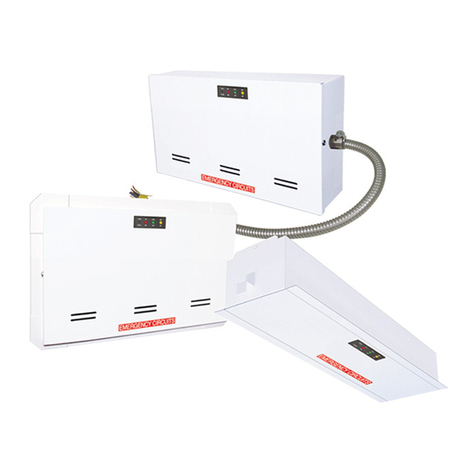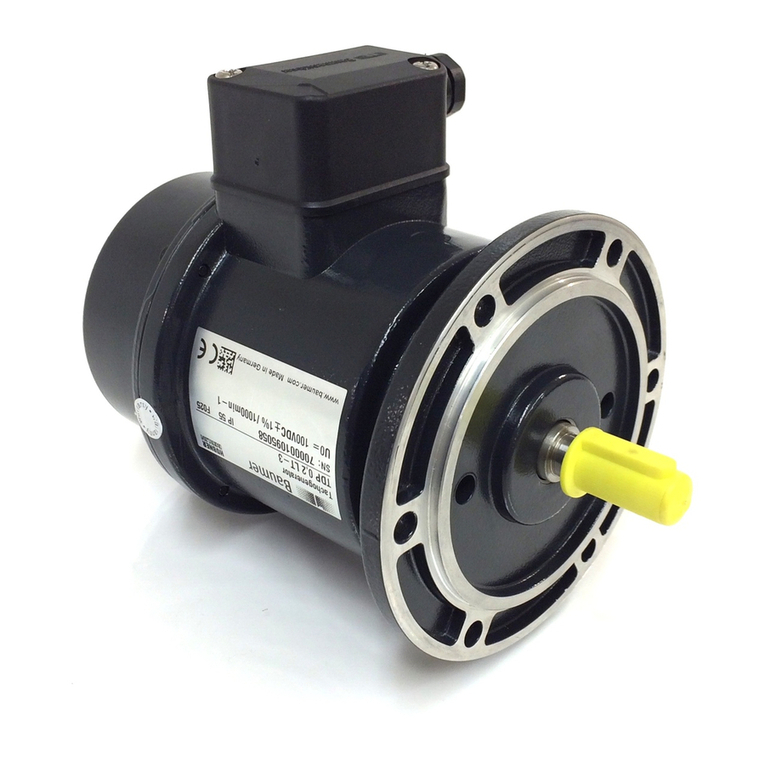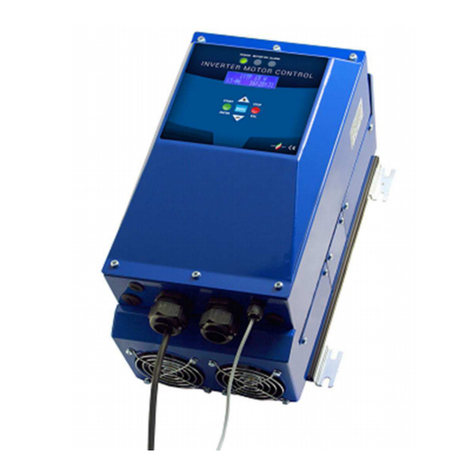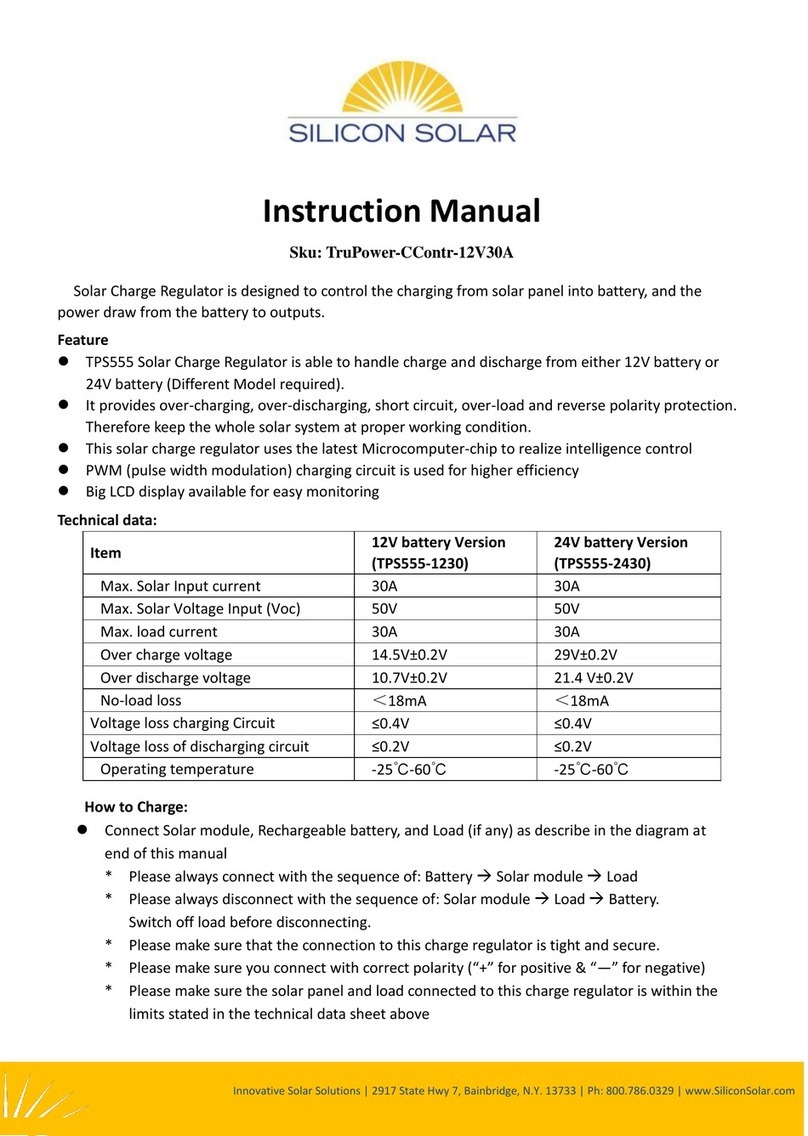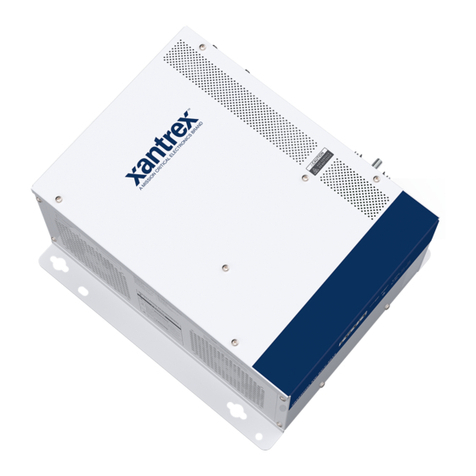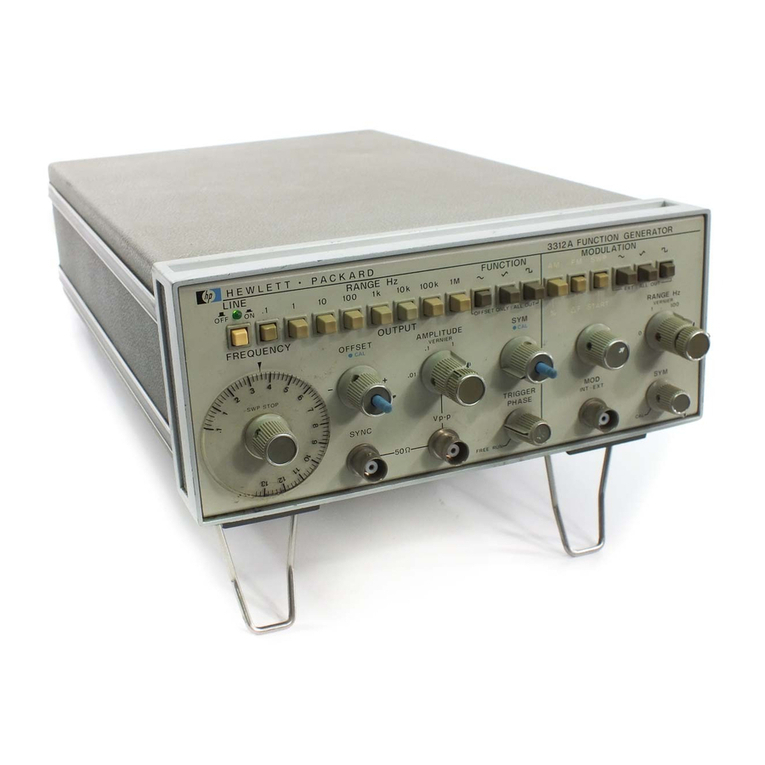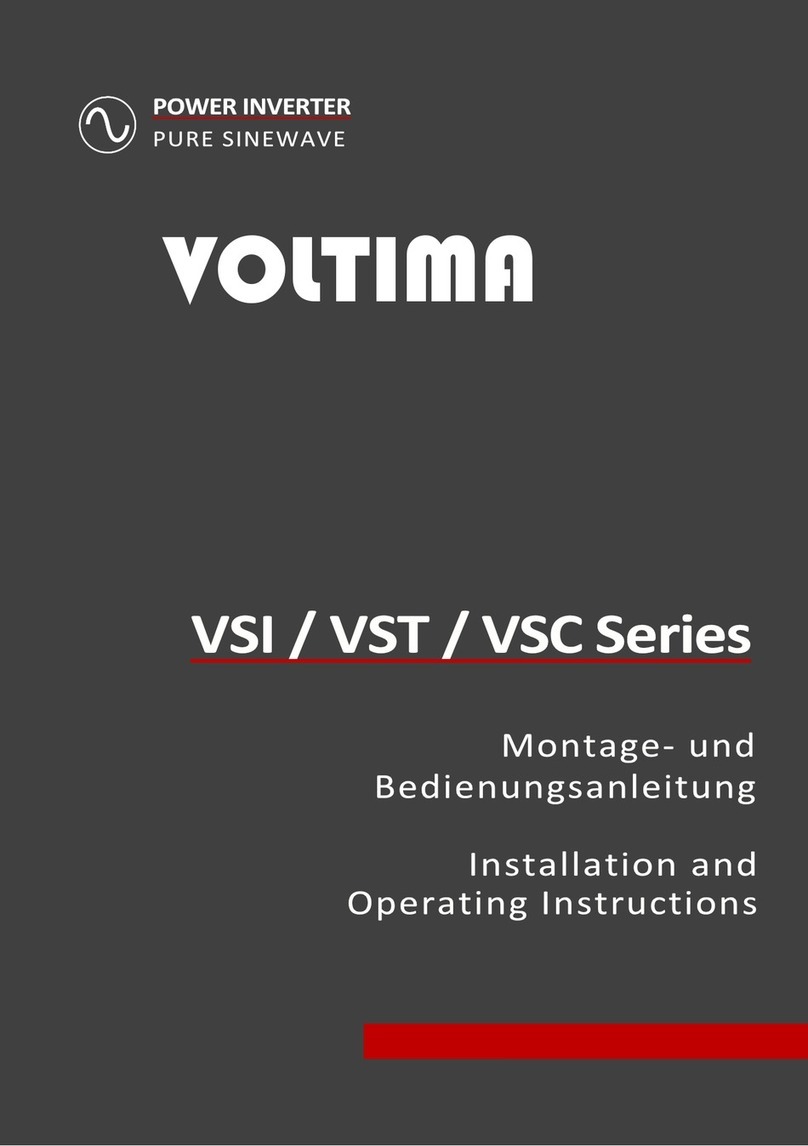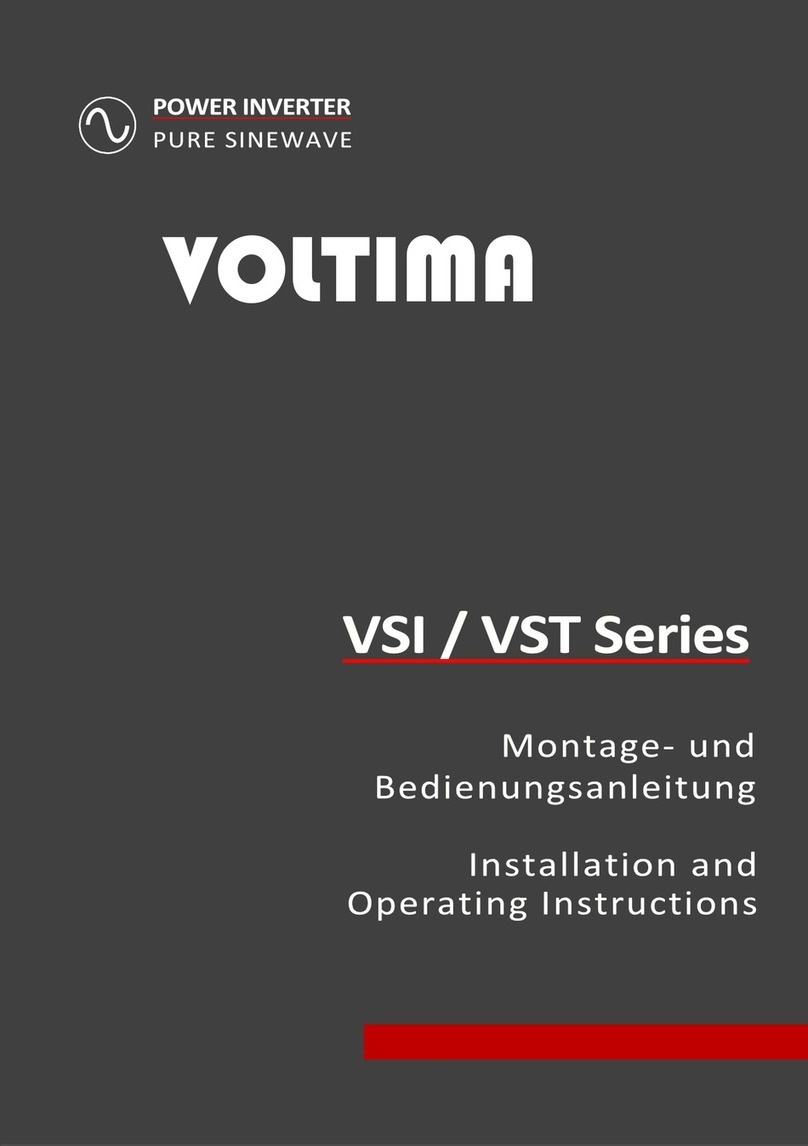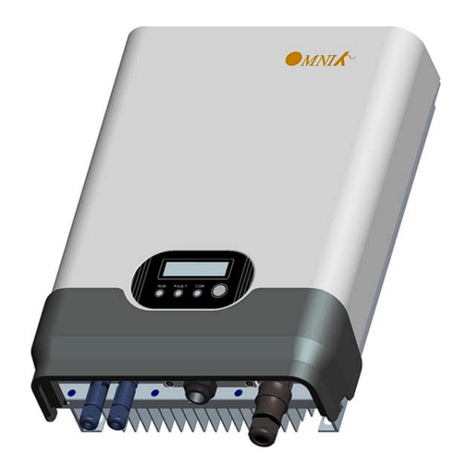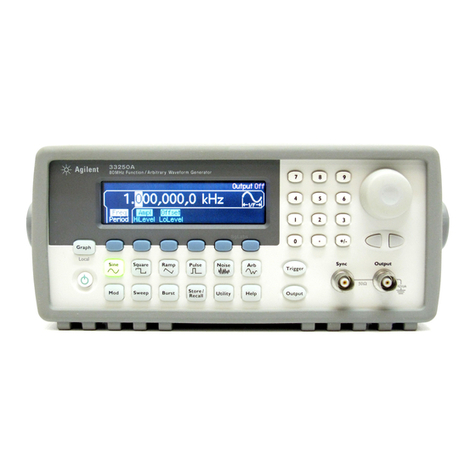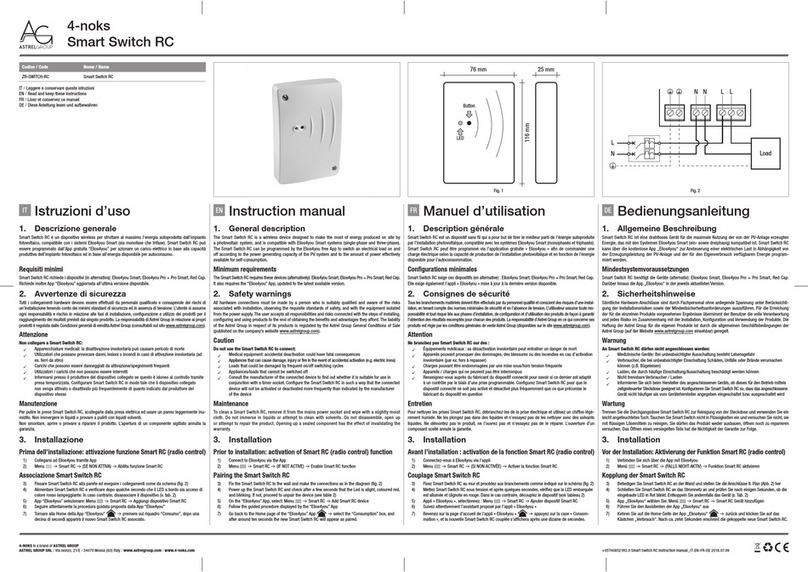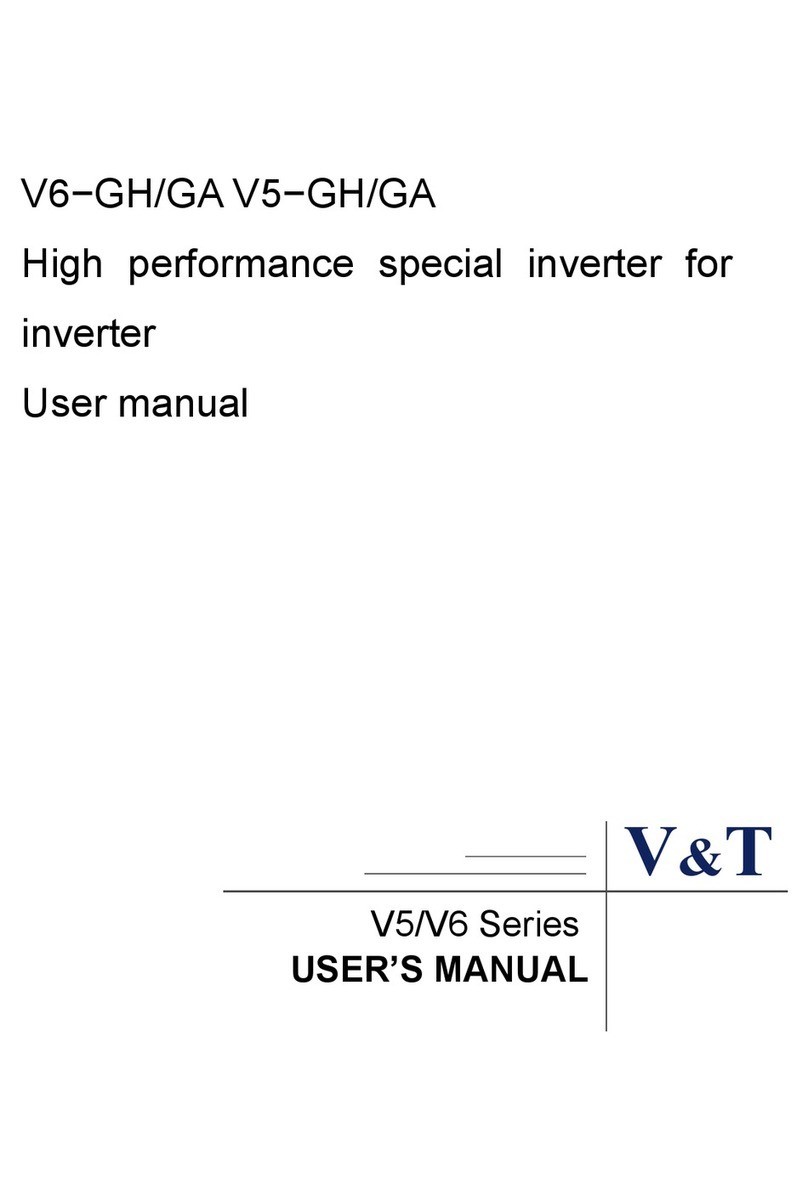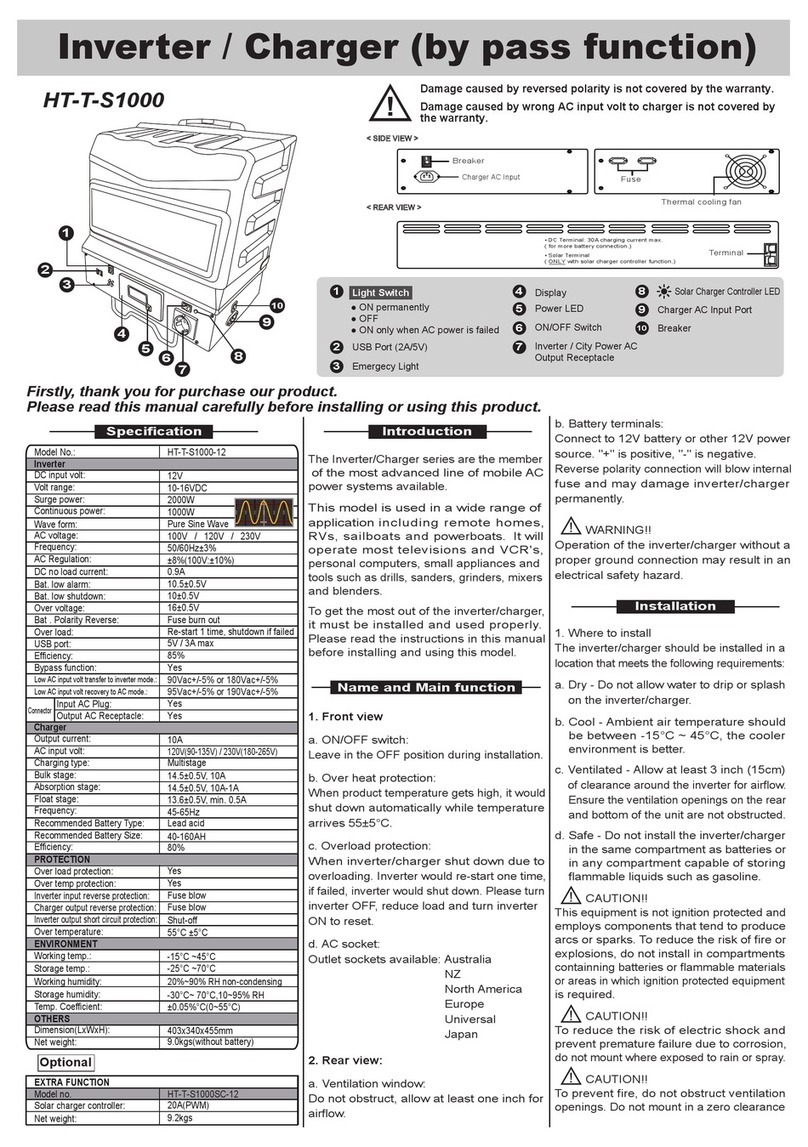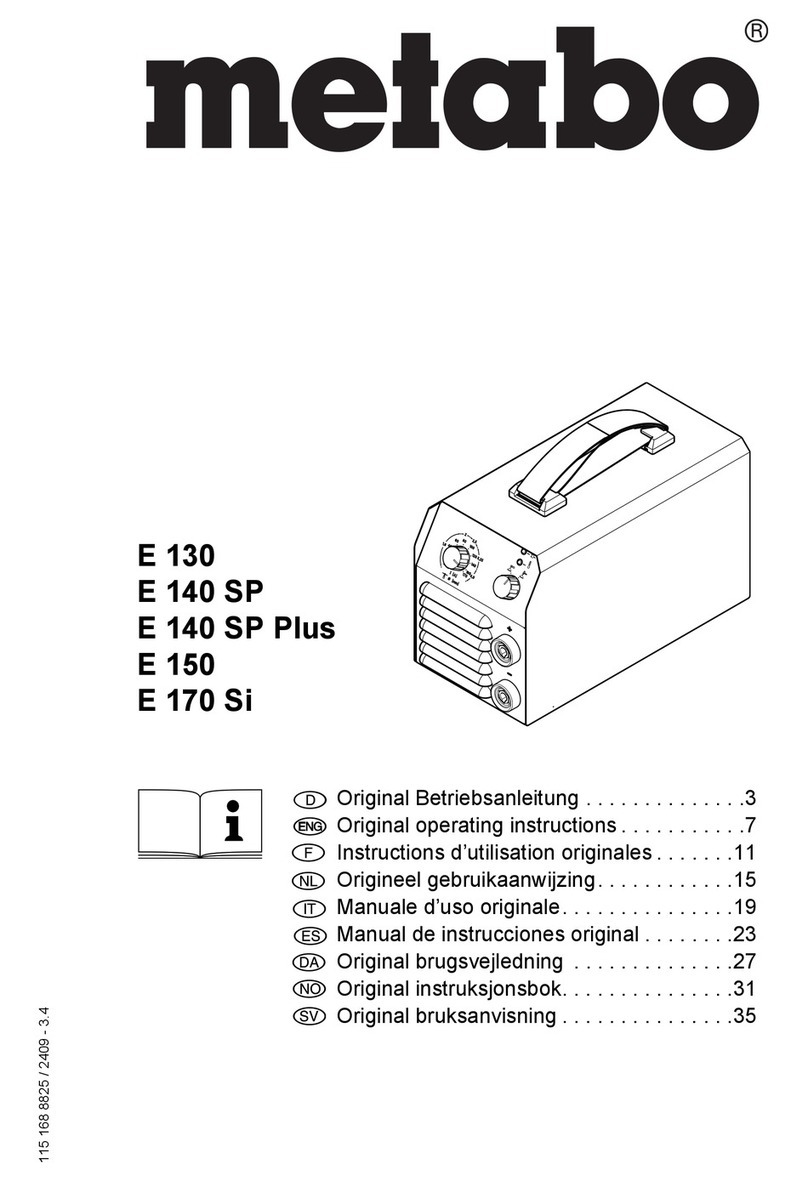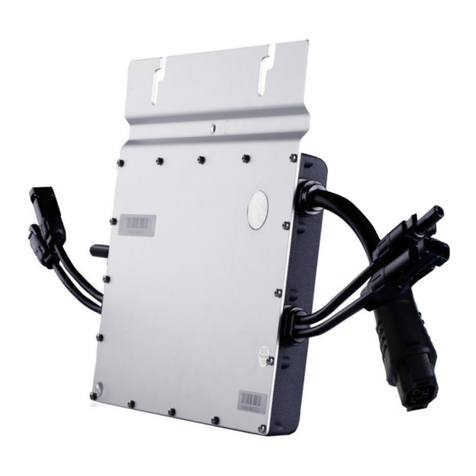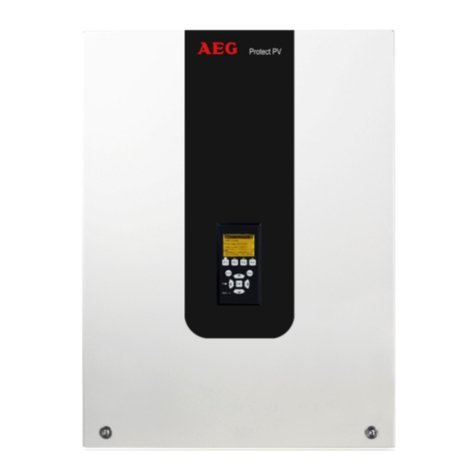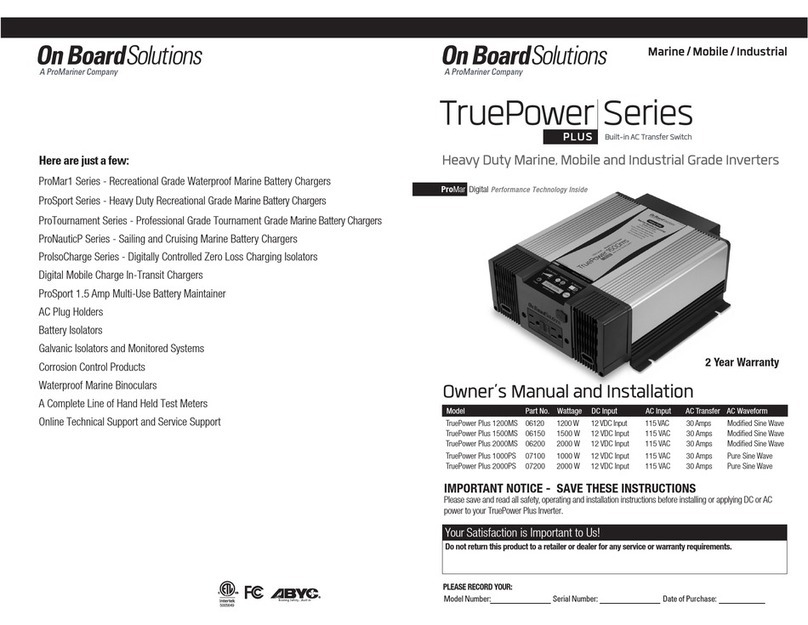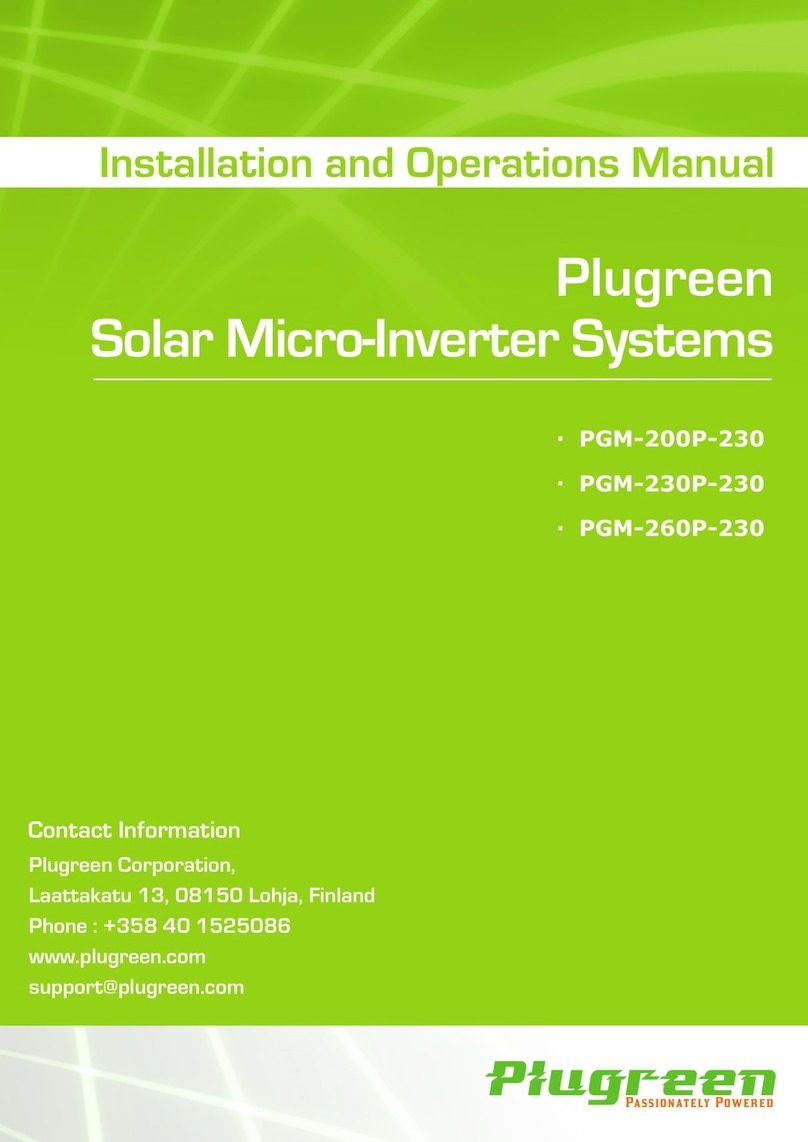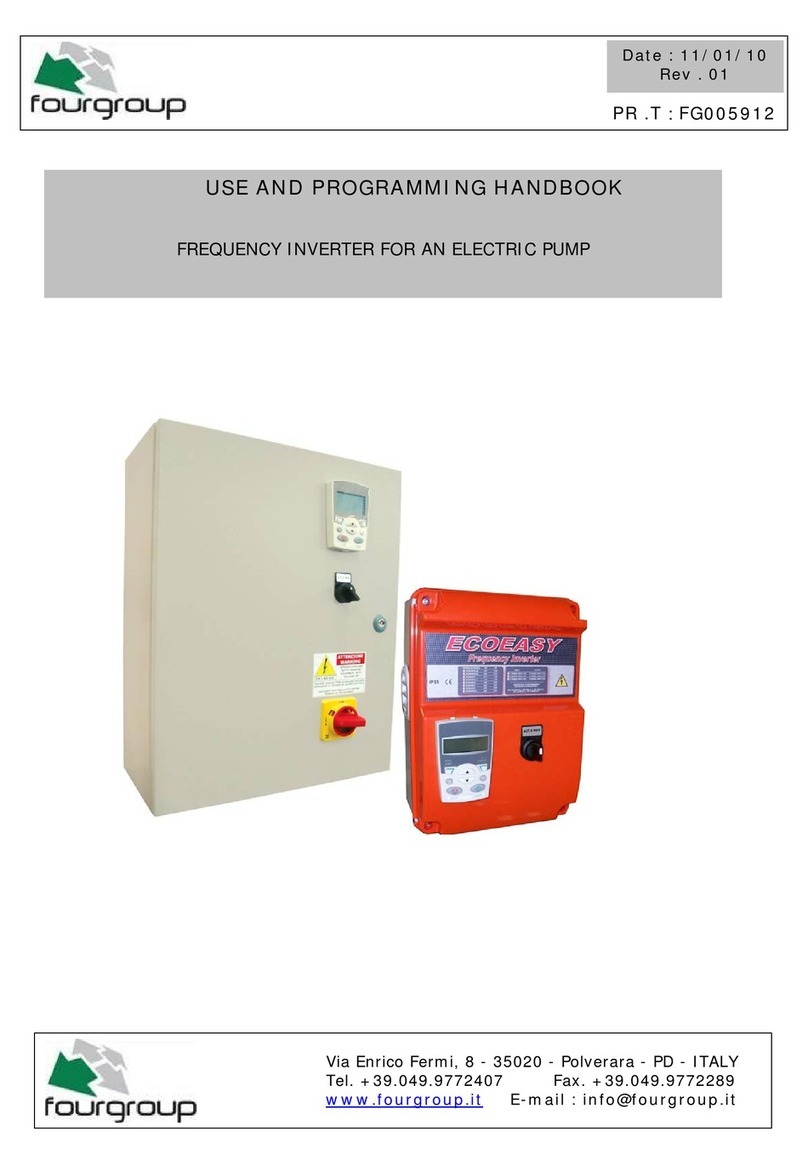INTERFERENCE WITH SOME EQUIPMENT
Buzz in Audio Equipment
Some inexpensive stereo systems may emit a buzzing noise from their loudspeakers when operated from
the inverter. This occurs because the power supply in the audio System does not adequately filter the
modified sine wave produced by the inverter.
The only solution is to use a sound system that has a high quality power supply.
Television Reception
When the inverter is operating, it can interfere with television reception on some channels. If interference
occurs, try the following:
1. Make sure that the chassis ground screw on the rear of the inverter is solidly connected to the ground
system of your vehicle or home.
2. Make sure that the television antenna provides an adequate (“snow-free”) signal and that you are using
good quality cable between the antenna and the television.
3. Keep the cables between the battery and the inverter as short as possible, and twist them together
with two to three twists per foot. (this minimizes radiated interference from the cables.)
4. Move the television as far away from the inverter as possible.
5. Do not operate high power loads with the inverter which the television is on.
Battery Requirements
Battery type and battery size strongly affect the performance of the power inverter. Therefore, you need
to identify the type of loads your inverter will be powering and how much you will beusing them between
charges. To determine the minimum battery size that you need to operate appliances, follow these steps:
1. Determine the wattage of each appliance and/or tool you will need to simultaneously operate from the
inverter. To do this, read the labels on the requirement to be operated. Usually, power consumption is
shown in watts. If it is shown in amps, multiply by 230V to determine the wattage.
2. Estimate the number of hours the equipment will be in use between battery recharges.
3. Determine the total watt-hours of energy use, the total running time and the average power
consumption power (in watts) by 10 if 12V system, by 20. If 24V system, by 40 if 48V system.
To calculate the approximate power in amps a 24 volt battery bank has to supply you need to know the
current, or amps required for powering the continuous AC load. A shortcut method is to divide the
continuous AC load. A shortcut method is to divide the continuous AC load wattage by 20.
For example, the continuous AC load is 2000 watts, the current (amps) is: 2000/20 or 100amps at 24V DC.
Add to the load any DC appliances that may be powered by the battery bank.
Notes: Some appliances required high surge power to start, then consumer less power. And some
appliances are not operating for long periods of time. For example, a typical home-use coffee maker
draws 500watts during its brew time of 5 minutes, but it maintains the temperature of the pot at about
100watts. Typical use of a microwave is only a few minutes, sometimes at lower power; some exceptions
to brief operating times are lamps, TVs and computers.
Important: The power inverter must be connected only to batteries with a normal output voltage of 12V
when you use a 12V inverter. The unit will not operate from a 6V battery, and will sustain permanent
damage if connected to a 24V battery.
Caution: Loosen connectors may cause overheated wires and melted insulation. Check to make sure you
have not reversed the polarity. Reverse polarity connection will result in a blown fuse and may cause
permanent damage to the inverter.
The calculation of the Battery’s Back Up Time
The battery’s back up depends on the battery capacity (Ah) and your appliances power (Watt)
The method to calculate the backup time:
Battery capacity (Ah) * Input voltage (Volt)/Loads power (Watt)
For example:
Battery capacity = 150Ah
Input voltage = 12Volt
Loading power = 600Watt
So:
(150Ah*12V)/600Watt = 3 Hours
Note: the time calculated by this way is a theory value; the actual using time may short than this value
Recharging Batteries
When possible, recharge your batteries when they about 50% discharged or earlier. This gives the
batteries a much longer life cycle than recharging when they are more deeply discharged.
Our inverter has a battery low voltage shutdown around 10V DC. With moderate to heavy loads, this will
protect against over-discharging the battery. If the inverter is running only light loads it is advisable to
recharge before the inverter low voltage shutdown point is reached.
